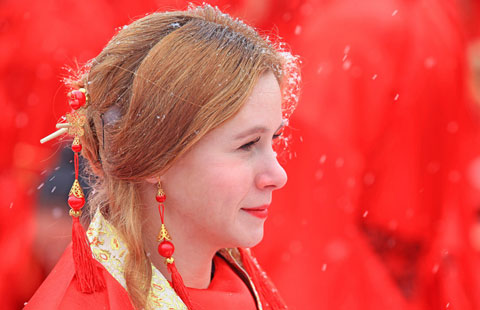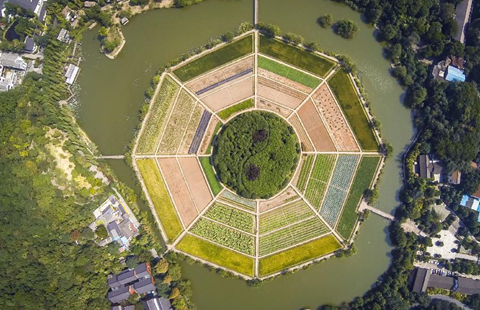New allure of malaysia
Updated: 2015-05-06 07:35
By Yang Feiyue(China Daily)
|
||||||||
A new consulate in Sabah, and the passage of time after two airline tragedies, are prompting Chinese tourists to return to the country's many attractions, Yang Feiyue reports.
A new Chinese consulate in Malaysia is expected to be a shot in the arm for local tourism.
It will help restore arrivals of Chinese tourists, says Huang Huikang, China's ambassador to Malaysia.
The consulate officially opened on April 27 and sits in Kota Kinabalu, Sabah. It is China's second consulate in east Malaysia after Kuching, Sarawak.
Huang says that Malaysia was among the top 10 favorite destinations of Chinese travelers, and Sabah has a lot to offer them.
The consulate will make things easier for bilateral personnel exchanges and offer new opportunities for China-Malaysia development and cooperation, he adds.
"I love Sabah. I believe that Chinese tourists will enjoy Sabah and its eco-tourism. The people here are very friendly and kind," he told the Malay Mail Online.
Huang explains that the Chinese government and industry players will continue attracting tourists to the country. China is now planning for another consulate in Penang.
Clouds from last year's misfortunes are dissipating over Malaysia, as more tourists are heading to the country for its natural beauty and other attractions. Tourism has begun to bounce back in 2015 after the significant drop in the number of Chinese tourists since the tragedy of the missing Malaysia Airlines flight MH370 from Kuala Lumpur to Beijing on March 8, 2014.
"We've seen steady growth in the number of Chinese tourists to Malaysia this year," says Ctrip's tourism department marketing director, Dai Yu.
Malaysia ranks seventh among the top 10 foreign tourism destinations for Chinese tourists during the 2015 Spring Festival, according to a report issued early this year by the China Tourism Academy.
"It's a good time to visit the country, as the ringgit has fallen 15 to 20 percent against the yuan," Dai says.
A favorable new visa policy is also expected to entice more Chinese tourists, Dai says.
The Malaysian government announced recently that Chinese tourists can be exempted from the visa application fee through the end of this year.
"But they still have to pay 120 yuan ($19.30) as a service fee," says Wang Shanshan, marketing director of the Malaysian embassy in China's tourism department.
"Chinese can stay in Malaysia for 30 days with a tourist visa."
Nice sunshine, pleasant climate, primitive tropical forests, island scenery, ancient folk customs and historical culture sites are luring tourists from afar to the country.
The best time to travel the east coast is from August and September, when the rainy season blows over, while the September to March period is considered prime time for divers along the west coast.
"Chinese tourists surge during the Spring Festival, the National Day and summer vacations," Dai says. Langkawi, Penang, Kuala Lumpur, Laguna Redang Island and Cherating Beach are among the popular destinations.
The Taman Negara National Park that spans Pahang, Terengganu and Kelantan is ideal for hikers, who can see various wild animals here, from fireflies to elephants. In addition, there are 27 other large-scale parks in easy reach.
The Bukit Nanas Forest Reserve at the center of Kuala Lumpur could also help tourists stretch their legs.
Divers have taken quite a shine to Malaysia, which offers a variety of diving opportunities, reasonable prices, and convenient transportation. Sabah's Pulau Sipadan is among the most popular venues.
Tourist can choose to dive in from the bank of the sea, or from a boat offshore.
"I saw many Chinese tourists here," says Guo Yukang, an engineer from Beijing. Guo spent six days touring Malaysia in April and dived in several sites of the country. She says she learned to dive in the Philippines and called herself a beginner.
Pulau Sipadan is the best diving site in the world, she claims.
"The water is clear and temperature is comfortable," she says
"It was amazing to see the large-scale shoals of barracuda and jackfish."
Guo even got herself mixed up in a crowd of jackfish crowd and played with them.
The unfathomable underwater cliff and polychromatic corals also took her breath away.
The country has well-developed diving facilities, and it's easy for tourists to lease diving equipment.
Those who are into island trips shouldn't miss Langkawi and Sabah.
At present, individual trips to Malaysia are mostly within 2,000 yuan on Ctrip's website.
A five-day trip from Shanghai to Sabah now costs less than 1,900 yuan.
A five-day trip from Shanghai to Langkawi, including five-star hotel accommodation, is available at less than 3,000 yuan throughout May, more than 50 percent off compared with last year's price.
Six-day trips to Malaysia and Singapore are attractively priced at around 3,000 yuan.
"Malaysia has well-developed infrastructure to offer tourists," Dai says.
"They don't have to worry about food disagreeing with them, since Malaysian Chinese account for 22 percent of the country's total population."
Drivers should be aware that traffic direction in Malaysia is the opposite of China, Dai adds.
"Vehicles are running towards the left and tourists should pay attention."
Roughly 1.6 million Chinese tourists went to Malaysia in 2014, down 9.9 percent compared with the previous year, according to the Malaysian embassy in China.
Some 266 flights from China to the capital city, Kuala Lumpur, were canceled following the tragedies of the flights MH370 and MH17, Malay Mail Online reports, noting that visitors from China still comprise Sabah's biggest number of foreign tourist arrivals, some 30 percent of the total.
Contact the writer at yangfeiyue@chinadaily.com.cn
(China Daily 05/06/2015 page24)

 Met Museum celebrates China with annual gala
Met Museum celebrates China with annual gala
 Ten photos you don't wanna miss - May 5
Ten photos you don't wanna miss - May 5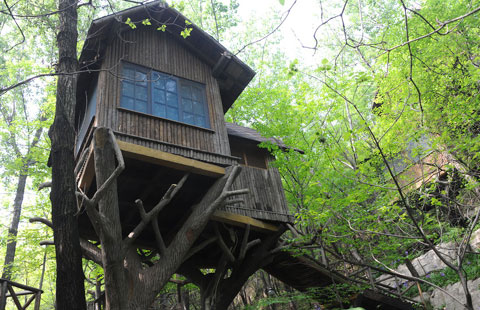
 Tree house hotel in Jinan
Tree house hotel in Jinan
 Six reasons stopping Apple Watch from ticking in China
Six reasons stopping Apple Watch from ticking in China
 Historical photos of 56 nations in China (Part I)
Historical photos of 56 nations in China (Part I)
 World No.1 Ma wins first men's singles world championship
World No.1 Ma wins first men's singles world championship
 Ten photos you don't wanna miss during May Day holiday
Ten photos you don't wanna miss during May Day holiday
 The world in photos: April 27 - May 3
The world in photos: April 27 - May 3
Most Viewed
Editor's Picks

|

|

|

|
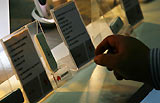
|
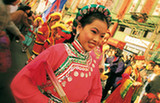
|
Today's Top News
Xi will honor soldiers during Russia trip
China reforms can benefit
US: experts
Shanghai bans families of govt officials from owning firms
Chinese companies demonstrate presence at OTC
Most Americans believe US wealth distribution unfair: poll
Xi, Eric Chu
stress shared destiny
New leaders take reins at oil giants
China protests
US blacklisting in religious freedom
US Weekly

|

|



